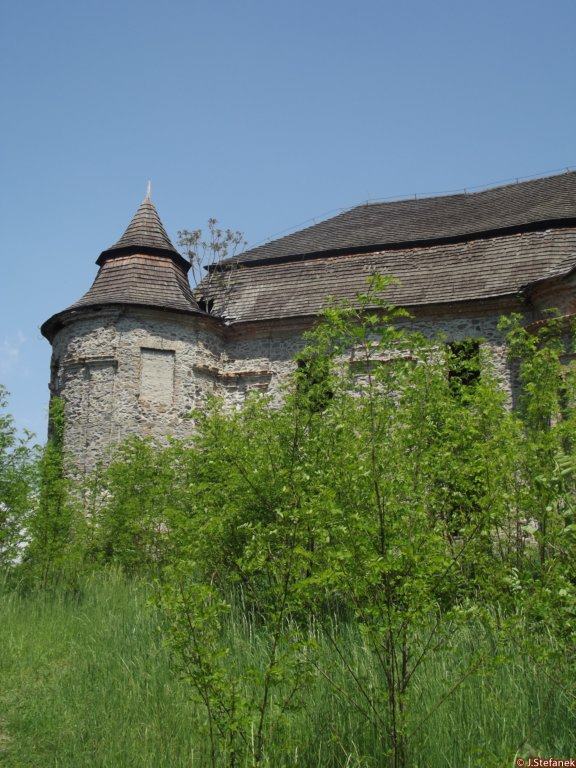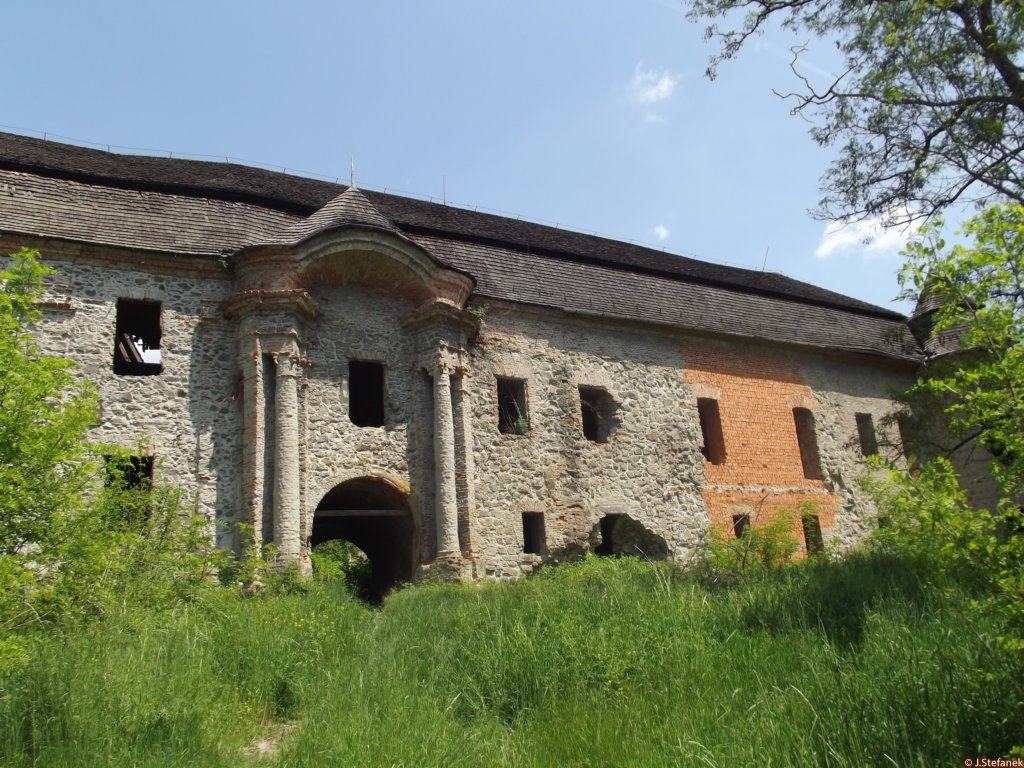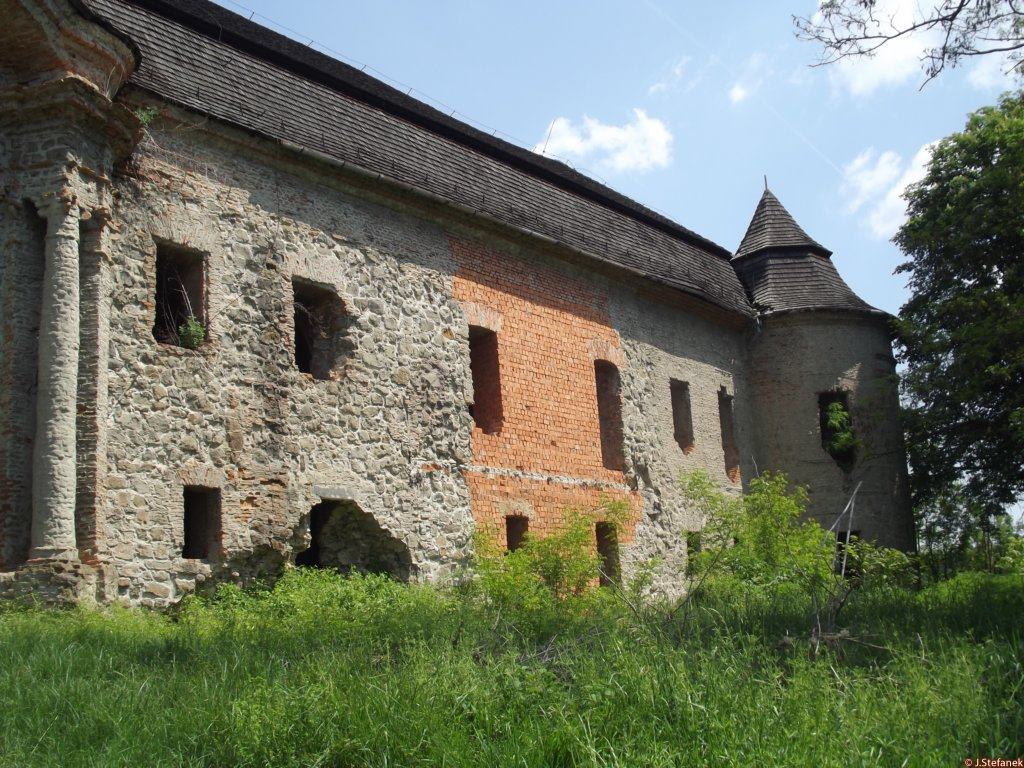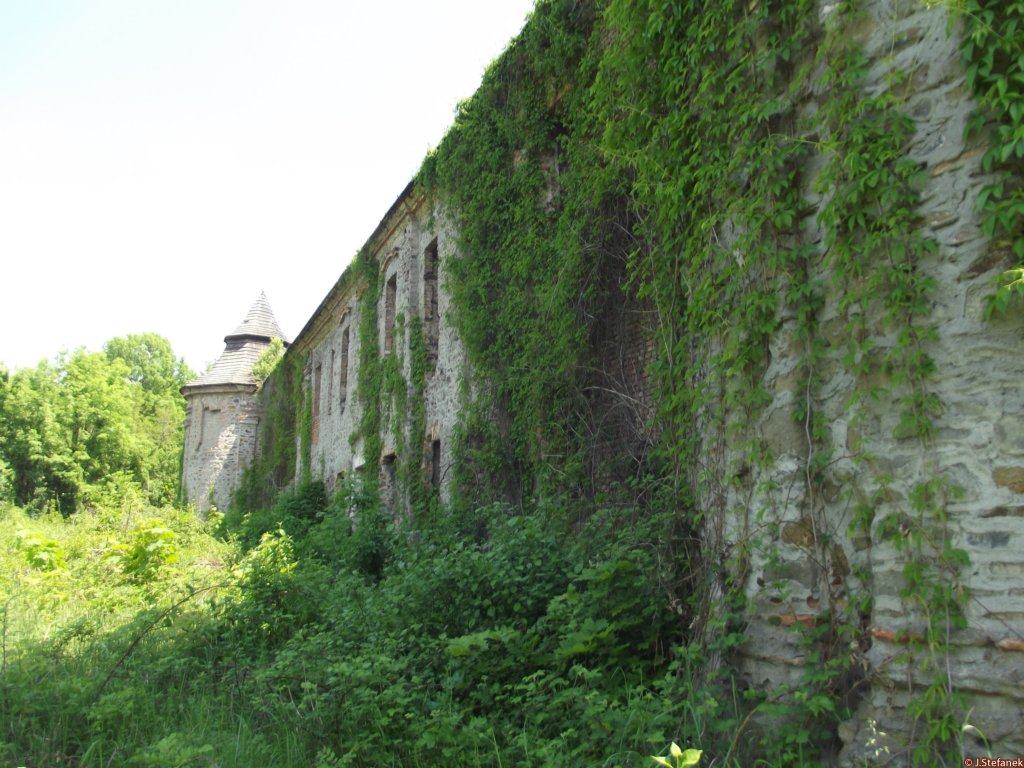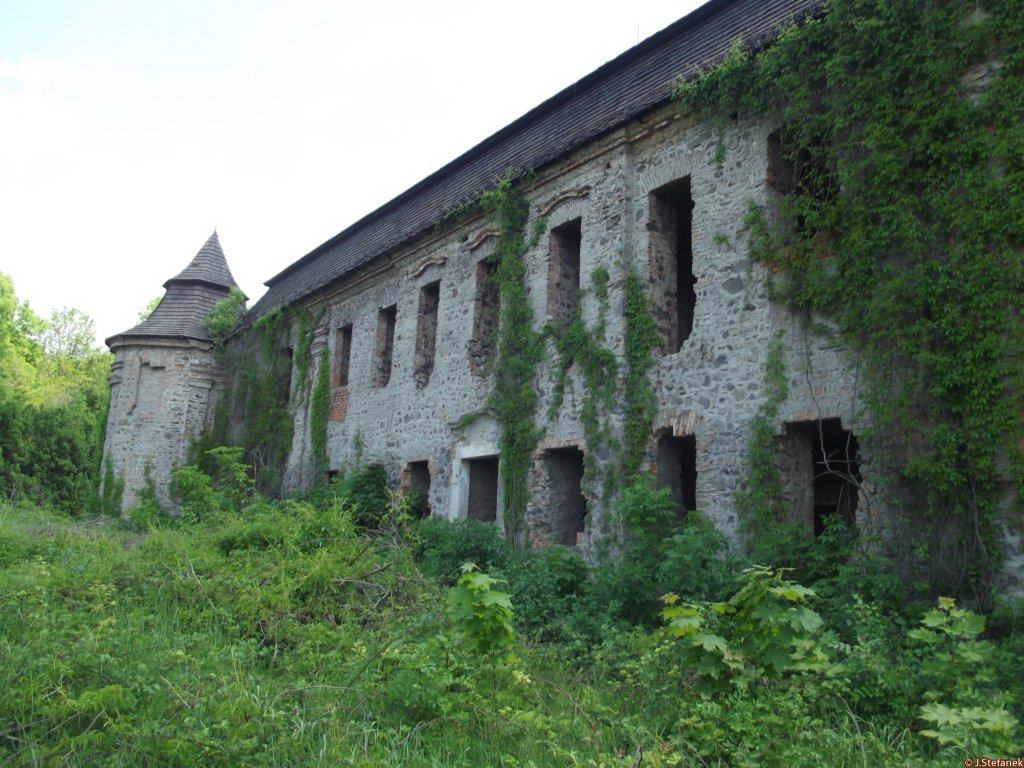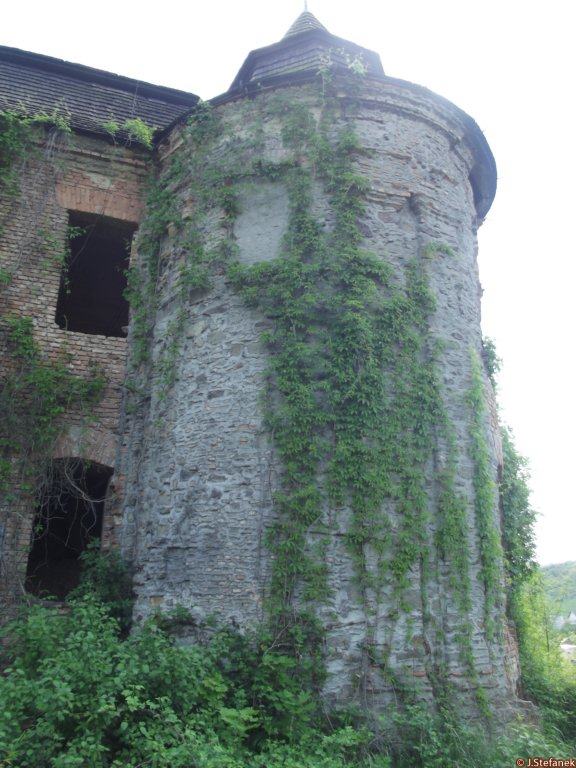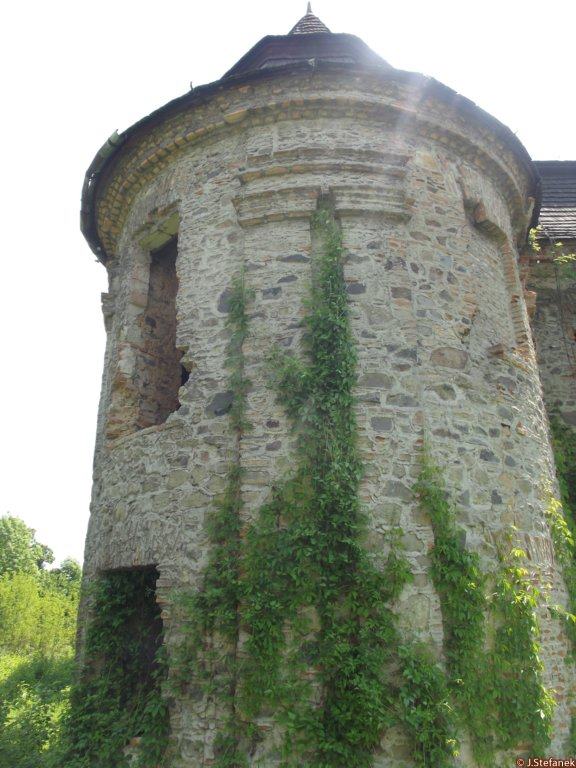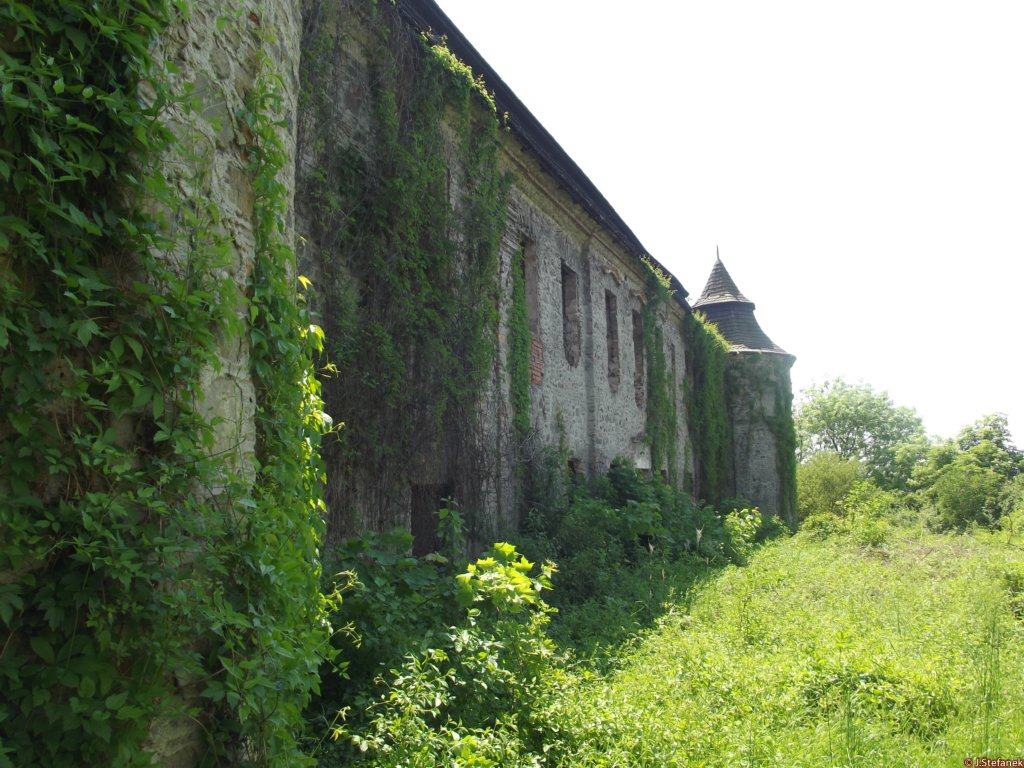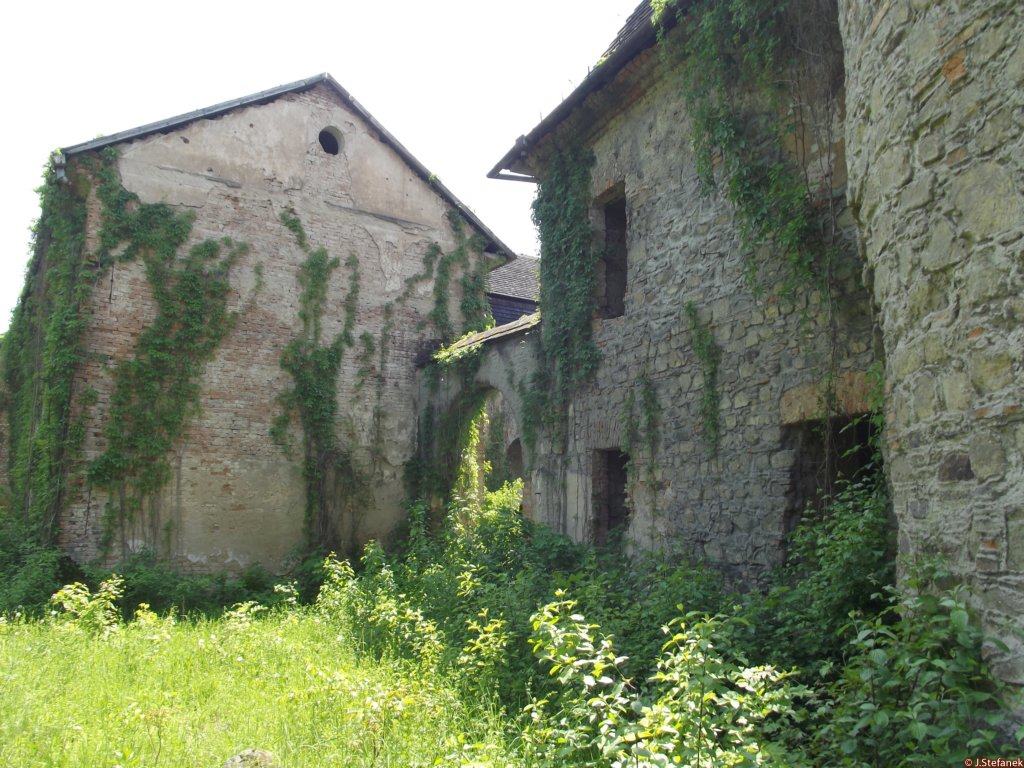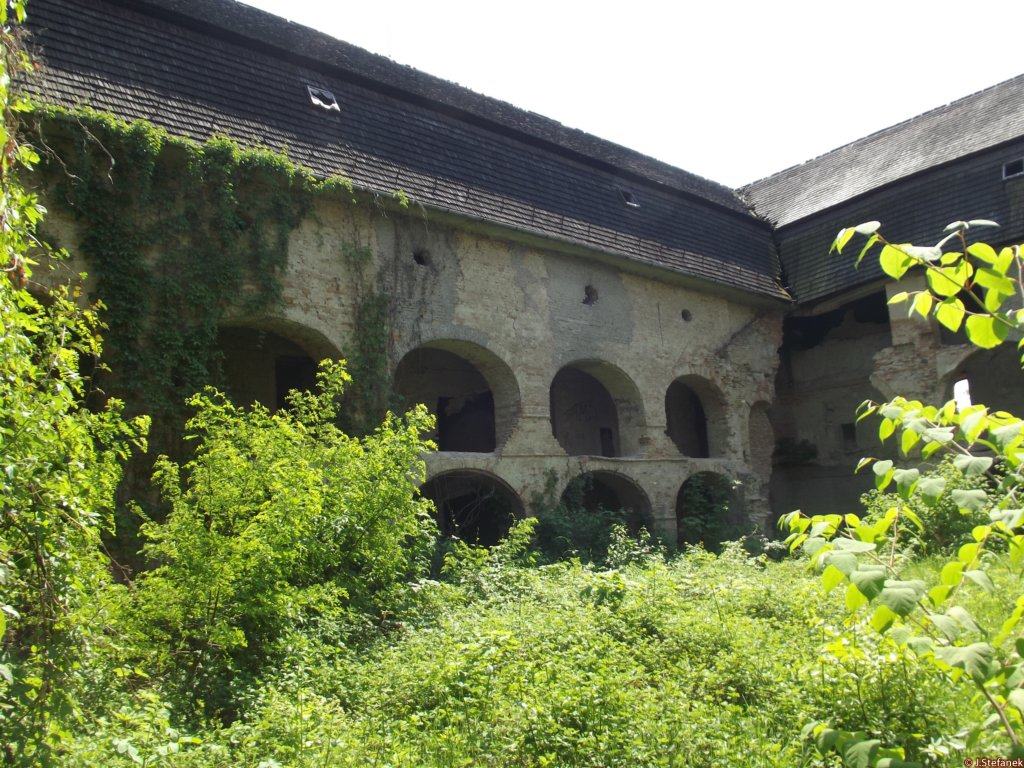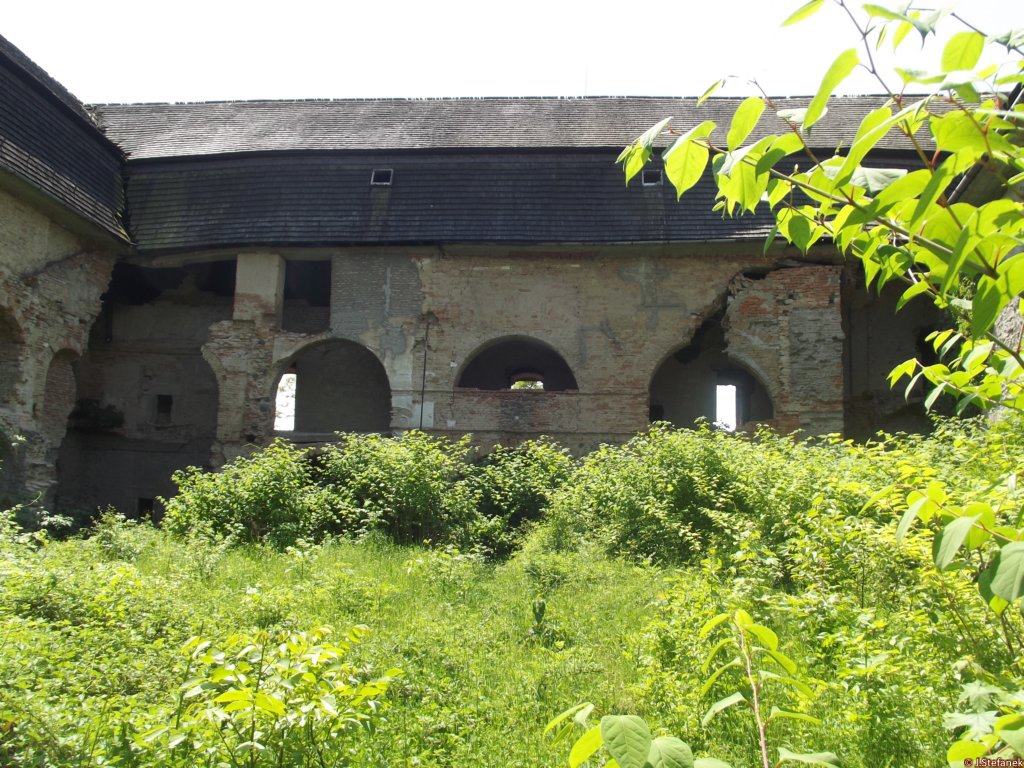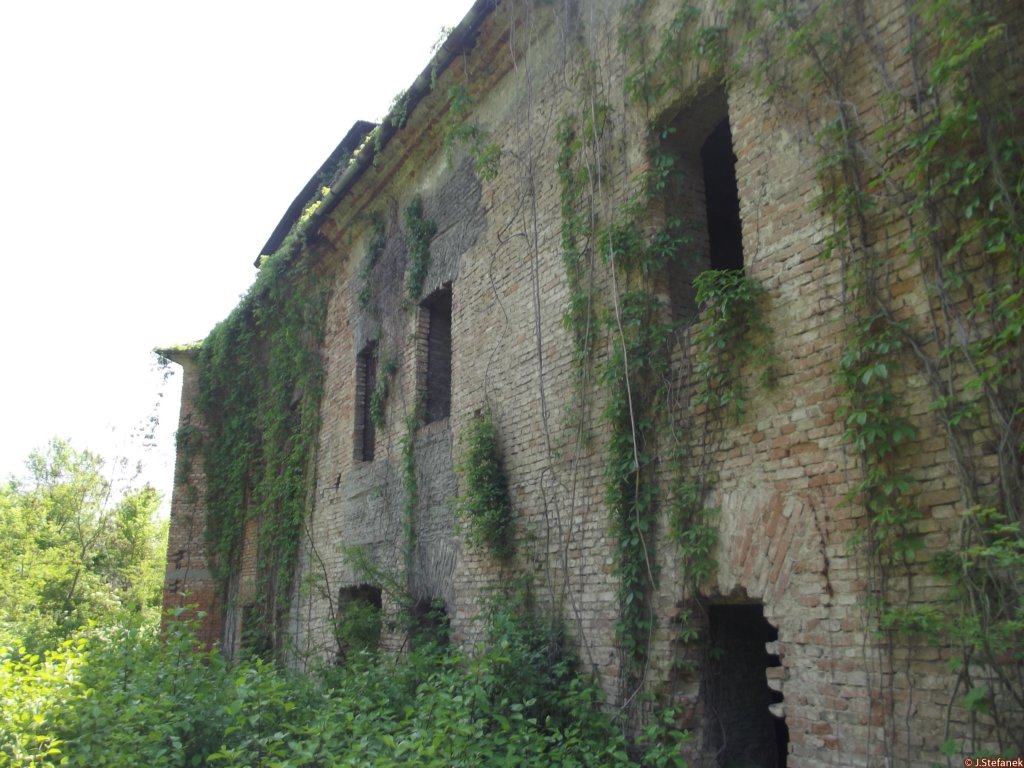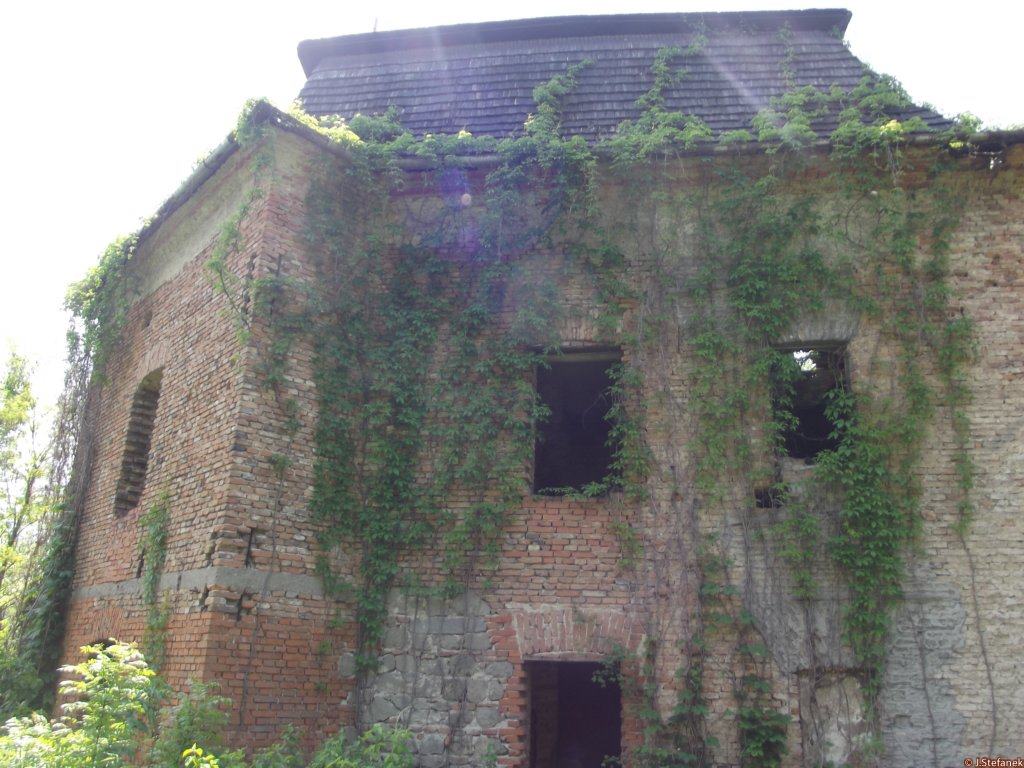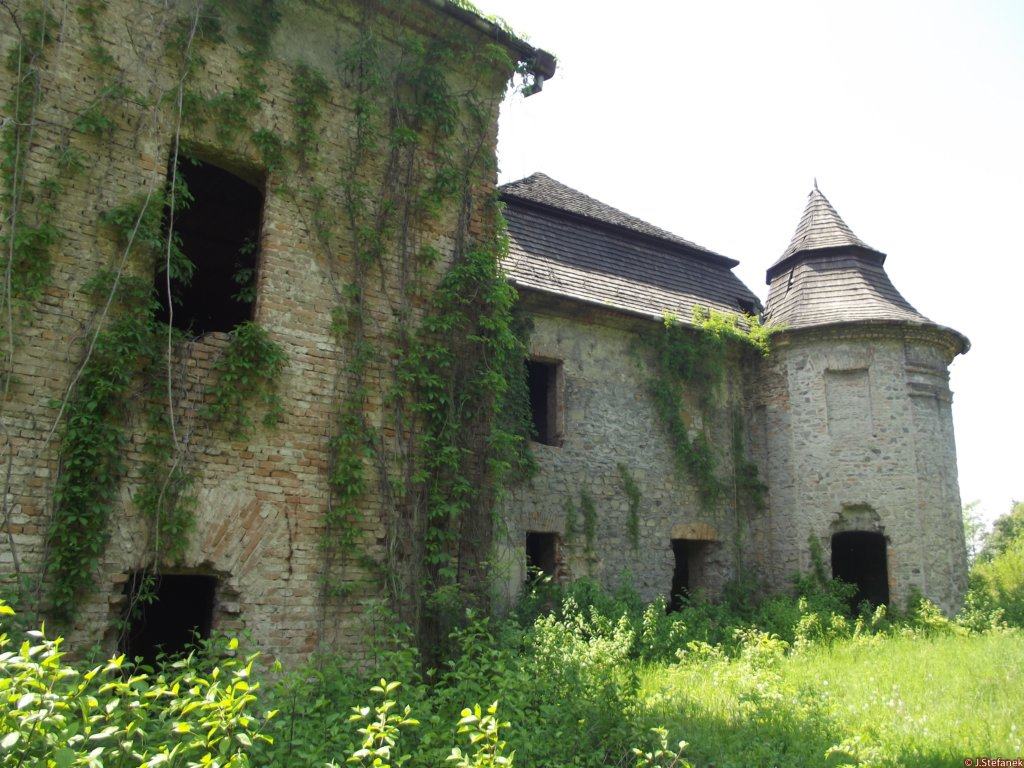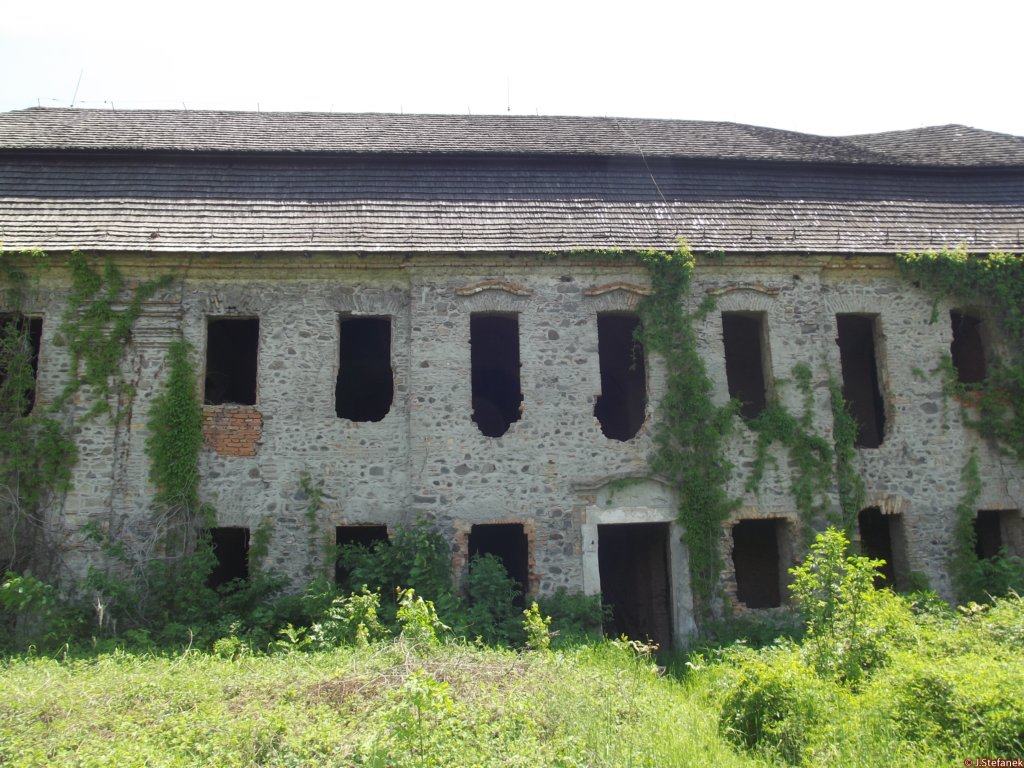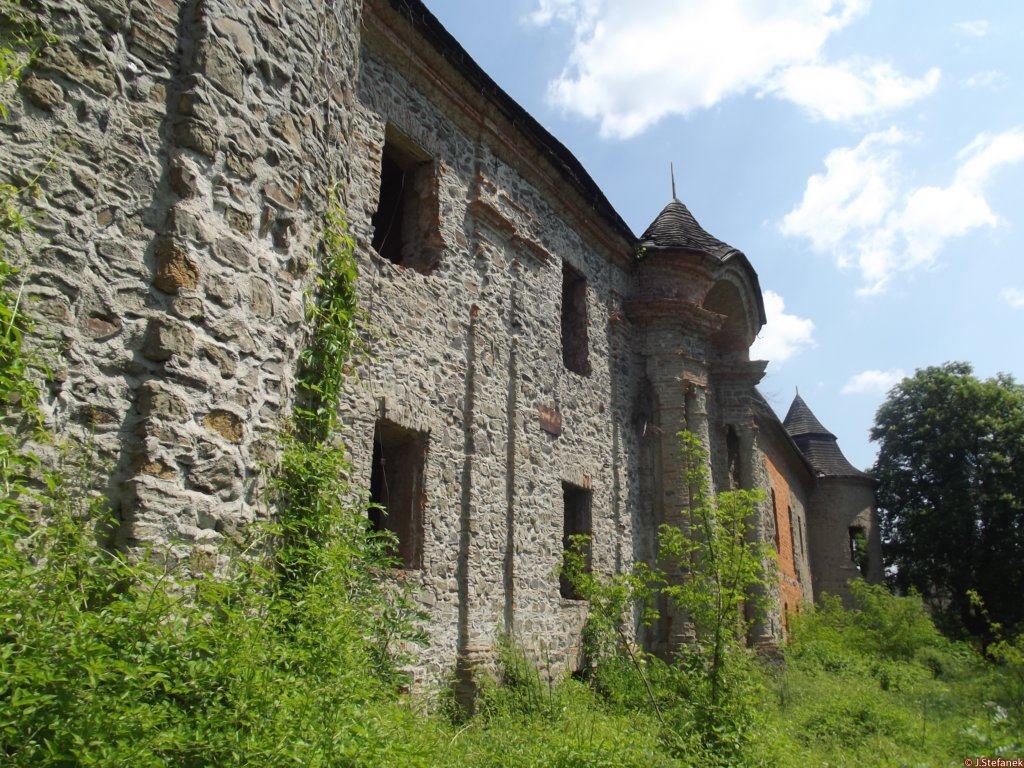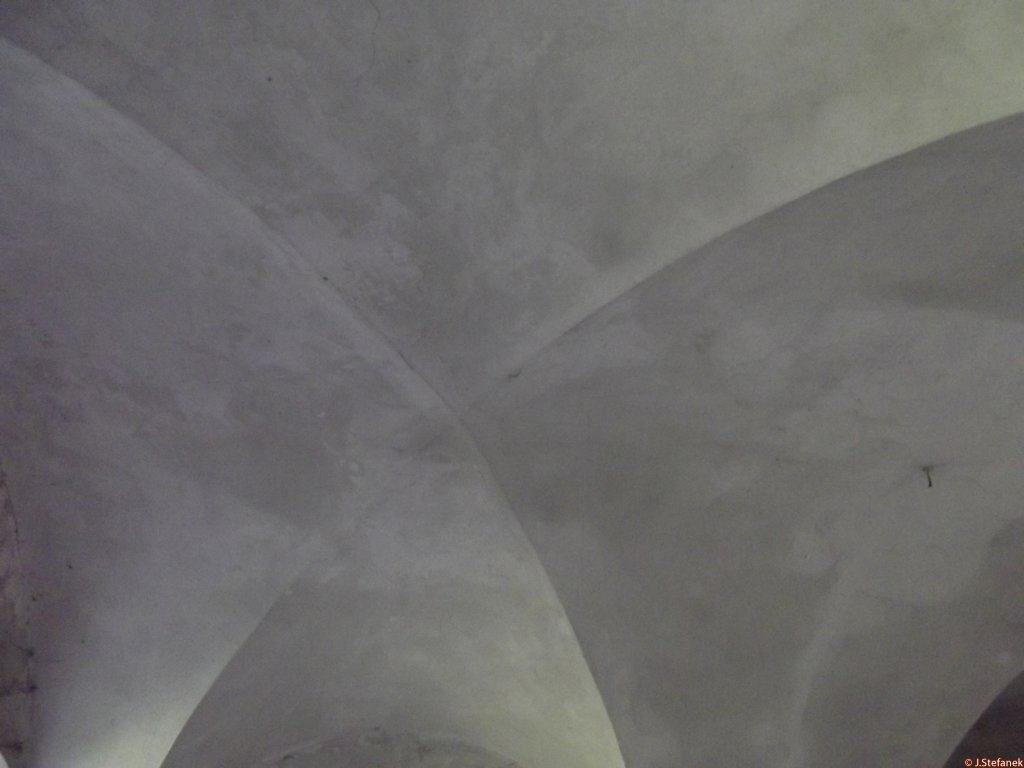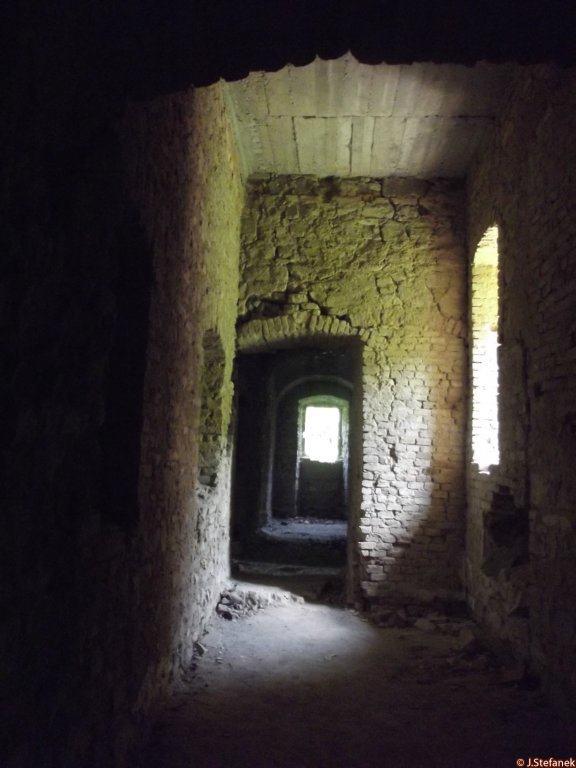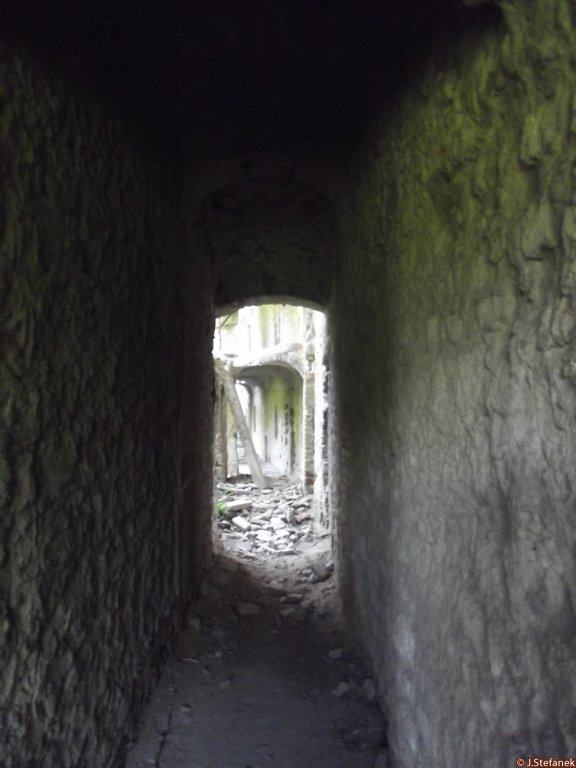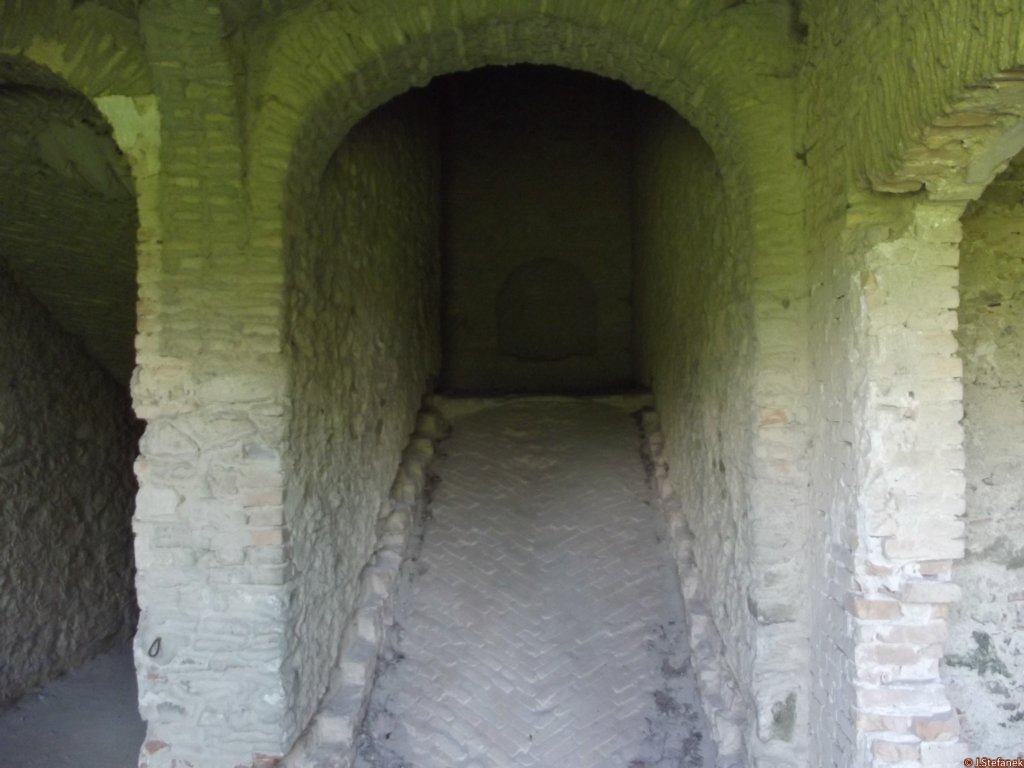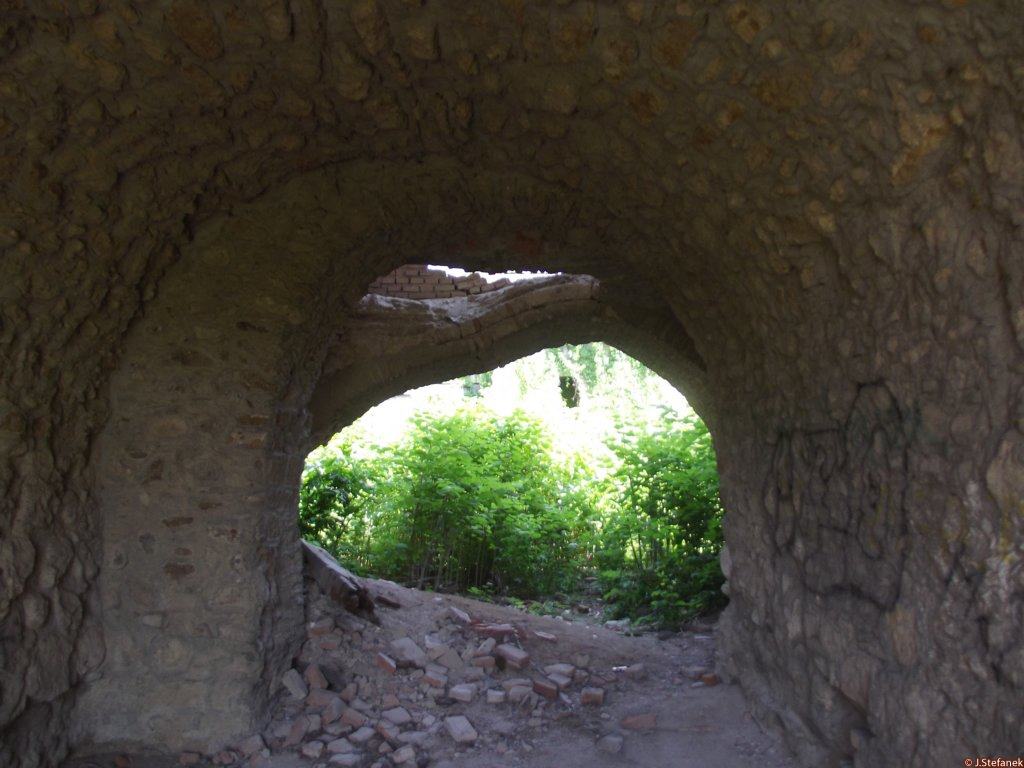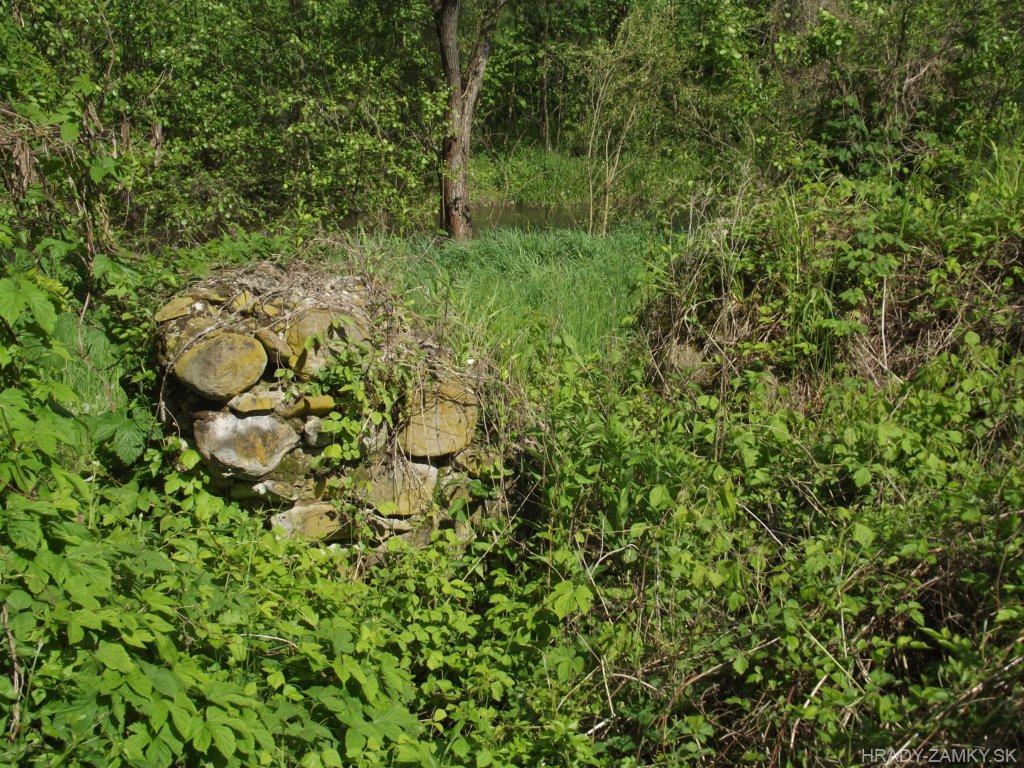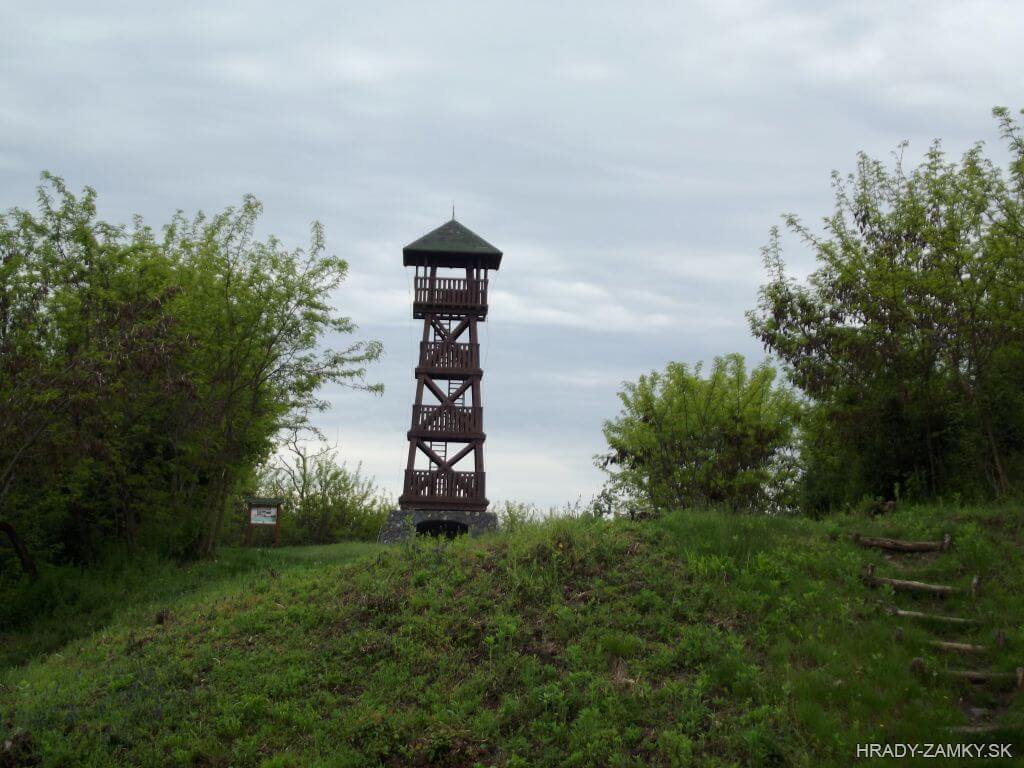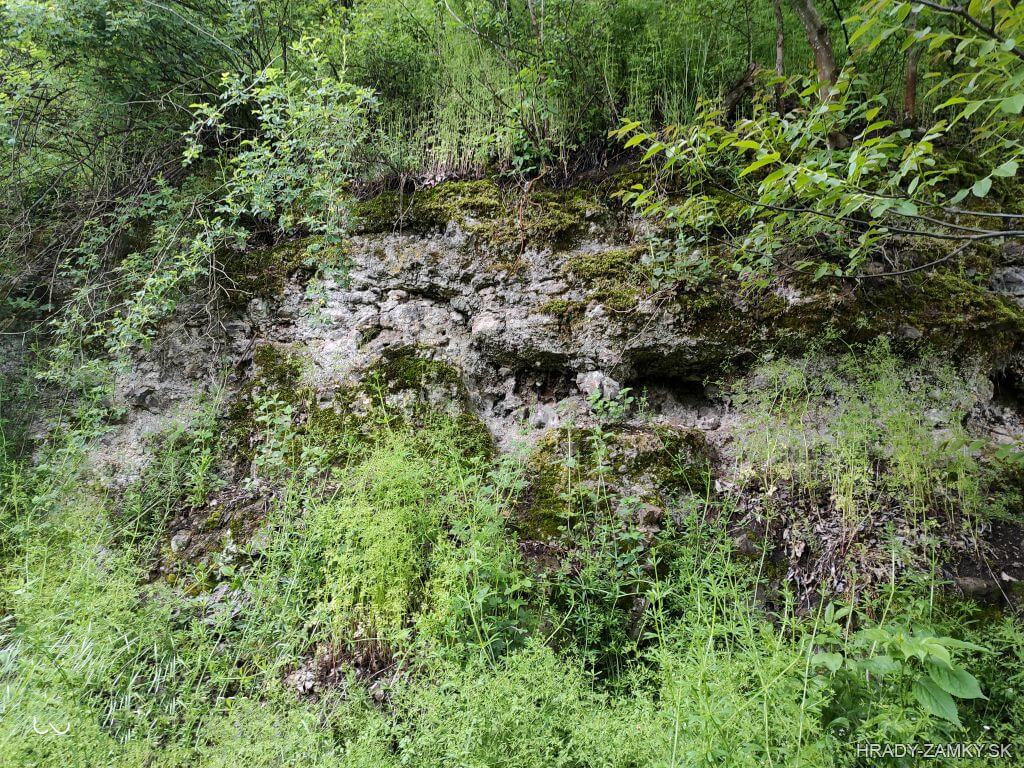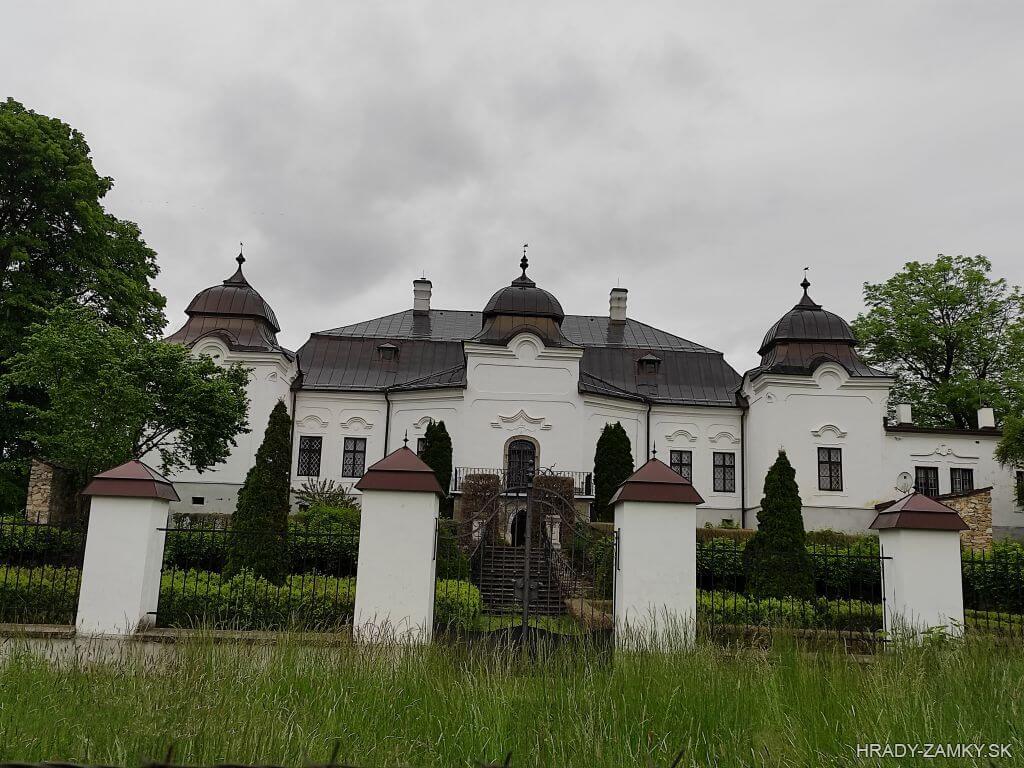Ožďany
Ožďany Banská Bystrica county Slovakia
manor, mansion
Ožďany
Ožďany Banskobystrický kraj Slovakia
kaštieľ
Originally a renaissance two-storey mansion, built in the first half of the 17th century on a small hill above the village of Ožďany, where an older Gothic castle probably stood from the beginning of the 14th century
Pôvodne renesančný poschodový kaštieľ, postavený v prvej polovici 17.storočia na menšej vyvýšenine nad dedinou Ožďany, kde stál starší gotický hrad pravdepodobne zo začiatku 14.storočia
Previous names
Osyan, Osgyán
Roads
Ožďany mansion, in the same named vilage, lies along the R2 highway between Lučenec and Rimavská Sobota. It is possible to get to the manor house from the main road that leads through the village, if we turn next to the local inn at the Catholic church (the turn is exactly opposite the church). There is a small car park. From there we continue on foot along a narrow alley to the right between the buildings until we reach the manor house.
Obec Ožďany, v ktorej sa kaštieľ nachádza, leží popri rýchlostnej ceste R2 medzi Lučencom a Rimavskou Sobotou. Ku kaštieľu je možné sa dostať z hlavnej cesty, ktorá vedie cez obec, ak pri katolíckom kostole odbočíme k miestnemu hostincu (odbočka je presne oproti kostolu). Tu je menšie parkovisko. Odtiaľ pokračujeme peši úzkou uličkou vpravo medzi budovami, až prídeme ku kaštieľu.
Description
The remains of a Gothic castle were incorporated into a new mansion, which has a plan of an irregular quadrilateral. Its wings are of varying length - the front southwest wing is slightly outwardly bent, opposite only partially (supplemented by a wall with a back gate to the courtyard). The entrance to the mansion is not on the axis, but on the left side of the front wing. In the middle of the 18th century, the manor house was rebuilt and redeployed four corner towers. The wings were given some new vaults, a staircase was added in the corner of the courtyard, so that the manor house, besides the staircase in the northwest wing, had another one in the south corner and at the eastern tower. The biggest change was the reconstruction of the facade. The entrance part was emphasized by the protruding side panel of the pilasters with rebuilt columns. Their rich cornice heads are supported by a compressed arch up to the height of the cornice of the roof. On the right side of the facade, a balcony was erected on four columns later to compensate for the great architectural accent of the portal.A classicist pavilion was built in the mansion park and in the first half of the 19th century an empire style building in the form of a Greek temple in antis was built by the mansion. Minor repairs to the mansion have not changed much and was inhabited until World War II. It suffered greater damage in 1945, when it was severely damaged by direct hits. The building was at least temporarily repaired in 1951-1953 before the demise (instead of one corner tower they built a square and renewed the roof).On the north side behind the mansion is a large park. Some sources wrongly says, that Juliana Korponai is buried here. However, it is certain that she was born in Ožďany. The Spiš Museum in Levoča confirmed that Julie Korponai was buried in Győr in the cemetery at the cathedral church. At present, the cemetery no longer exists, it is covered with paved area.
Zvyšky gotického hradu boli včlenené do nového kaštieľa, ktorý má pôdorys nepravidelného štvoruholníka. Jeho krídla majú rozličnú dĺžku - čelné juhozápadné krídlo je mierne navonok zalomené, protiľahlé len čiastočne (doplnené múrom so zadnou bránkou na nádvorie). Vstup do kaštieľa nie je v osi, ale v ľavej časti predného krídla. Kaštieľ v polovici 18.storočia prestavali a prefasádovali aj štyri nárožné veže. Krídla dostali niektoré nové klenby, v rohu nádvoria pristavali schodište, takže kaštieľ mal okrem schodiska v severozápadnom krídle ďalšie v južnom rohu a pri východnej veži. Najväčšiu zmenu priniesla prestavba fasády. Vstupnú časť zdôraznila vystupujúca bočná výplň pilastrov s prestavanými stĺpmi. Na ich bohaté rímsové hlavice dosadá stlačený oblúk až vo výške rímsy strechy. V pravej časti priečelia neskôr pristavali na štyroch stĺpoch balkón, ktorý mal vyvážiť veľké architektonické zdôraznenie portálu.V parku kaštieľa postavili klasicistický pavilón a v prvej polovici 19. storočia pri kaštieli empírovú stavbu v podobe gréckeho chrámu in antis. Menšie opravy na kaštieli už veľa nezmenili a do druhej svetovej vojny bol obývaný. Väčšiu ujmu utrpel v roku 1945, keď bol značne poškodený priamymi zásahmi. Pred zánikom zachránila objekt aspoň provizórna oprava v rokoch 1951-1953 (namiesto jednej nárožnej veže postavili štvorhrannú a obnovili strechu).Na severnej strane za kaštieľom sa nachádza rozsiahly park. Niektoré zdroje zrejme mylne udávajú informáciu, že je v ňom pochovaná Juliana Korponaiová známa ako Levočská biela pani. Isté je však, že sa v Ožďanoch narodila. Spišské múzeum v Levoči potvrdilo, že Júliu Korponaiovú pochovali v Győri na cintoríne pri katedrálnom kostole. V súčasnosti už cintorín neexistuje, prekrýva ho vydláždená plocha.
Plan
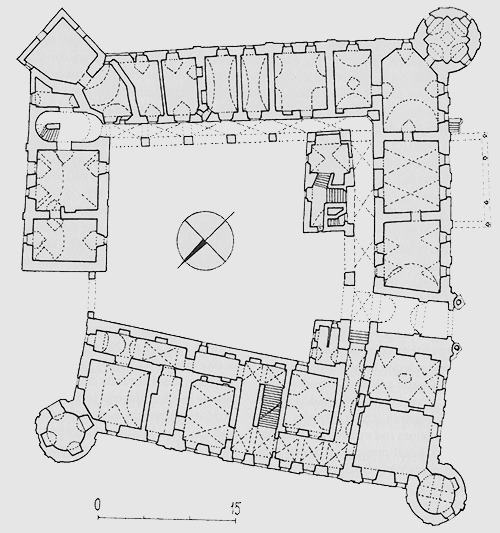
-
History
Originally a Renaissance manor house, after the burning of the castle by the imperial army in 1604. The castle probably dates from the beginning of the 14th century. In the 15th century, it was in the hands of the brothers for some time. The remains of this Gothic castle were built into a Renaissance manor house, which was rebuilt in the middle of the 18th century. The first landowners were the Orlés, who built the castle manor. From 1452 to 1460, Ján Jiskra of Brandýs had it in his power. The intransigence of the manor is also evidenced by the invasions of Turks and Tatars, the struggles of Kurucs and Labans and the invasion of the Bolsheviks, which the manor has endured.
According to historical sources, in September 1678, the Kuruk platoon of Imrich Thököly attacked Ožďany and looted the village. In 1703, the owner of the manor, Žigmund Géczy, joined František Rákóczi. Later, the owner of the castle, Ján Korponai, did the same. The manor is also associated with the figure of Juliana Korponai-Géczy, known as the White Lady of Levoča. She was born in Ožďany around 1680. Her father was a peasant, a landowner and the owner of the manor, Žigmund Géczy. She married Ján Korponai, the captain of Čabraď Castle. When she turned 23, her father joined František Rákóczi, who was preparing a plan for an uprising against the Habsburgs in Hungary. However, the uprising ended in failure, with the signing of the Peace of Satumar. Rákóczi left for France after 1711 and never accepted his defeat. In 1712, the White Lady of Levoča informed the Imperial General Ján Pállfy that she had delivered letters from Francis II. Rákóczi, in which he calls for the resistance of the Habsburgs. However, she could not prove her claims because she allegedly burned the leaves. Her announcement compromised several noble personalities and therefore brought her to justice. Fearing that no one would be suspected of violating the Peace of Satumar, she was sentenced to death. After two years of torture on the Red Stone, Levoča's White Lady was executed on September 25, 1714 at the market in Győr, Hungary.
It is known from the history of the Oždian manor house that until 1926 its last inhabitant was Margita Luzsénszky, born Majoros de Berente. Her husband was Baron Henrich Gustav Karol Richard Luzsénszky de Luzsna et Reglicze. The last Baron Henrich Luzsénszky died in 1907 and is buried in Hungary. After 1926, the manor house in Ožďany was definitively nationalized by the Czechoslovak state.
Between the two world wars, there was a Ursuline monastery in the manor and for some time a burgher school. Later, the manor passed under the administration of the village. During the years 1926 until the end of the 80s of the 20th century, the use of the Oždian manor house changed. At the end of the 1980s, it was planned to reconstruct the manor house. They intended to set up a restaurant with a hotel complex in the large area of the manor. A part of the future reconstructed building of the cultural monument was to be the planned establishment of a permanent exhibition dedicated to the History of the manor house in Ožďany. However, political changes in 1989 and in the following years stopped the whole event. In 2019, a fire broke out in the dilapidated mansion, which destroyed the entire roof. A year later, the reconstruction of the roof began.
Pôvodne renesančný kaštieľ postavili po vypálení hradu cisárskym vojskom v roku 1604. Hrad pochádzal pravdepodobne zo začiatku 14.storočia. V 15. storočí bol istý čas v rukách bratríkov. Zvyšky tohto gotického hradu boli vstavané do renesančného kaštieľa, ktorý v polovici 18.storočia prestavali. Prvou zemepánskou rodinou boli Orléovci, ktorí postavili hradný kaštieľ. Od roku 1452 až do roku 1460 ho mal vo svojej moci Ján Jiskra z Brandýsa. O nepoddajnosti kaštieľa svedčia aj vpády Turkov a Tatárov, boje kurucov a labancov a vpád boľševikov, ktoré kaštieľ pretrval.
Podľa historických prameňov v septembri 1678 napadli Ožďany kurucké čaty Imricha Thökölyho a obec vyplienili. V roku 1703 sa majiteľ kaštieľa Žigmund Géczy pripojil k Františkovi Rákóczimu. Neskôr tak urobil aj majiteľ hradu Ján Korponai. S kaštieľom sa spája aj postava Juliany Korponai-Géczyovej, známej ako Levočská biela pani. Narodila sa v Ožďanoch okolo roku 1680. Jej otcom bol zeman, statkár a majiteľ kaštieľa Žigmund Géczy. Za manžela si vzala Jána Korponaia, kapitána hradu Čabraď. Keď dovŕšila 23 rokov, jej otec sa pripojil k Františkovi Rákóczimu, ktorý pripravoval plán povstania proti Habsburgovcom v Uhorsku. Povstanie však skončilo neúspešne, podpísaním Satumarského mieru. Rákóczi po roku 1711 odišiel do Francúzska a nikdy sa so svojou prehrou nezmieril. Levočská biela pani v roku 1712 oznámila cisárskemu generálovi Jánovi Pállfymu, že jej doručili listy Františka II. Rákócziho, v ktorých vyzýva na odpor Habsburgovcov. Svoje tvrdenia však nevedela dokázať, lebo listy údajne spálila. Jej oznámenie kompromitovalo viaceré šľachtické osobnosti, a preto ju postavili pred súd. Z obavy, aby nikto neupadol do podozrenia z porušenia Satumarského mieru, ju odsúdili na trest smrti. Levočskú bielu paniu po dvojročnom mučení na Červenom kameni popravili 25. 9. 1714 na trhovisku v Győri v Maďarsku.
Z histórie oždianskeho kaštieľa je známe, že do roku 1926 bola jeho poslednou obyvateľkou Margita Luzsénszky, rodená Majoros de Berente. Jej manželom bol barón Henrich Gustáv Karol Richard Luzsénszky de Luzsna et Reglicze. Posledný barón Henrich Luzsénszky zomrel v roku 1907 a pochovaný je v Maďarsku. Po roku 1926 kaštieľ v Ožďanoch definitívne znárodnil Československý štát.
Medzi oboma svetovými vojnami bol v kaštieli kláštor uršulínok a istý čas aj meštianska škola. Neskôr prešiel kaštieľ pod správu obce. Počas rokov 1926 až do konca 80-tych rokov 20. storočia sa využitie oždianskeho kaštieľa menilo. Koncom 80-tych rokoch 20.storočia bolo v pláne objekt kaštieľa zrekonštruovať. V rozsiahlom areáli kaštieľa mienili zriadiť reštauračné zariadenie s hotelovým komplexom. Súčasťou budúceho zrekonštruovaného objektu kultúrnej pamiatky malo byť plánované zriadenie stálej expozície, venovanej Histórii kaštieľa v Ožďanoch. Politické zmeny v roku 1989 a v nasledujúcich rokoch však celú akciu zastavili. V roku 2019 v schátranom kaštieli vypukol požiar, ktorý zničil celú strechu. O rok neskôr sa začalo s rekonštrukciou strechy.
Myths and legends
White Lady of Levoča
The most famous legend of the village is the story of Julia Korponai known as the White Lady of Levoča. She was the daughter of Sigismund Géczy - Colonel of the bodyguard Imrich Tököli. Her husband became Ján Korponai, who was on the emperor's side at the time of the uprising, but switched to the Kuruc side because of July. The property of the Korponais was confiscated because of this, and in an effort to regain it, Julia was to become an emperor's spy. Legend has it that she went to Levoča, where she became the mistress of the Kuruk captain to subsequently give information to the emperor and let the enemy troops in through the city gate. Legend has it that her remains were placed in the crypt of the Ozdian Roman Catholic mansion, but historians found that she was imprisoned in Gyori and executed on September 25, 1714 in the square. She was buried in the cemetery there. The alleged betrayal of the White Lady of Levoča also proved to be a lie and her name was cleared.
Levočská biela pani
Najznámejšou legendou dediny je príbeh o Júlii Korponaiovej známej ako Levočská biela pani. Bola to dcéra Žigmunda Géczyho – plukovníka telesnej stráže Imricha Tököliho. Jej manželom sa stal Ján Korponai, ktorý bol v čase stavovského povstania na cisárovej strane, no kvôli Júlii prešiel na stranu kurucov. Majetok Korponaiovcov bol kvôli tomuto skonfiškovaný a v snahe získať ho späť sa Júlia mala stať cisárovou špiónkou. Legenda hovorí, že šla do Levoče, kde sa stala milenkou kuruckého kapitána aby následne dávala informácie cisárovi a vpustila dnu nepriateľské vojská mestskou bránou. Legenda tiež hovorila, že jej pozostatky boli uložené v krypte Oždianskeho rímsko-katolíckeho kaštieľa, historici však zistili, že bola uväznená v Gyori a 25. septembra 1714 popravená na námestí. Pochovaná bola na tamojšom cintoríne. Údajná zrada Levočskej bielej pani sa taktiež ukázala ako lož a jej meno bolo očistené.
Useful information
The manor is on private land. The roof of the manor is under reconstruction after a fire.
Kaštieľ je na súkromnom pozemku. Strecha kaštieľa je v rekonštrukcii po požiari.
Nearby castles
